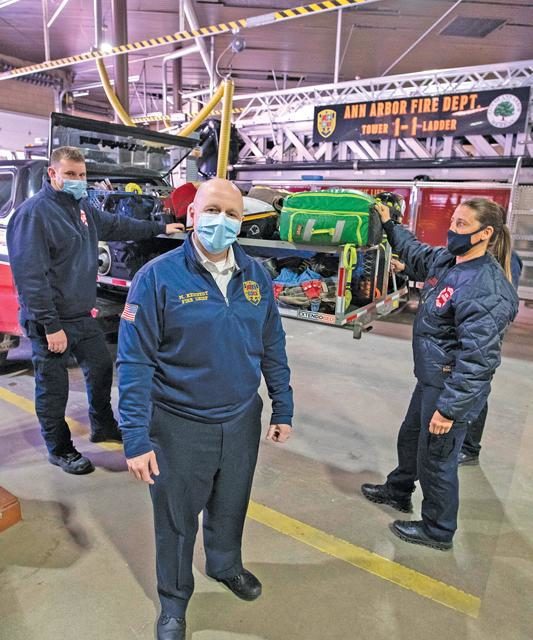HVA saw its staffing fall more than 20 percent during the pandemic (“Paramedics Needed,” January). Now the Ann Arbor Fire Department wants to deploy a “safety net”: an HVA ambulance staffed by firefighters.
According to the department’s latest annual report, its crews spend just 4 percent of their time fighting fires and another 20 percent on false alarms and hazardous conditions calls. More often, they’re backing up HVA on medical runs and responding to what interim city administrator Milton Dohoney terms “good intent” calls: making sure grandma is alright when she doesn’t answer the phone and that the unmoving guy on the park bench is just sleeping.
The paramedic shortage has caused the worst delays in rural areas, where Chelsea and Scio Township already have purchased ambulances to house in their fire departments. According to HVA CEO Ron Slagell, the delays are less serious in urban areas, where the average response time rose from 8.3 minutes in 2018 to 9.1 minutes in 2021. But he acknowledges they’re seeing cases where firefighters have waited up to an hour for an ambulance to take a patient to the hospital.
“It’s not life and death,” says AAFD chief Mike Kennedy. But sometimes, “the ambulances keep getting diverted” to more-urgent calls. “The problem for us is that I have a crew out of service” until HVA catches up.
When Kennedy was hired in 2018, the department was sending an expensive-to-operate ladder truck to many medical calls. He persuaded the city to buy Rescue 1-1, a heavy-duty pickup with EMS equipment staffed by two EMT-trained firefighters.
Now he is looking to a safety-net ambulance as a more permanent solution. HVA would provide the vehicle and pay for its upkeep, while Rescue 1-1’s crew would be reassigned to staff it when needed. “We would arrive on scene,” says Kennedy, “and if HVA is delayed or they don’t have any units, then we just transport.”
Slagell stresses that “the arrival of the transporting ambulance is not the primary factor that impacts patient outcome”–it’s “getting an initial basic life-support responder to the scene … The EMS system, not only in our community but in most communities across the country, is designed so that the fire department arrives first.” Firefighters assess and stabilize the patient, “then wait for the arrival of the transporting paramedic ambulance.”
But Slagell agrees that “there have been increased occurrences when [firefighters] had to wait for the transporting ambulance to arrive. That’s really the crux of this issue.”
The Washtenaw/Livingston Medical Control Authority is debating how communities’ ambulances should interface with HVA’s. According to Kennedy, the current proposal is that the AAFD would wait ten minutes for critical patients and fifteen minutes for stable patients before taking over. But, he says, “If HVA is reporting ‘no units available,’ then I am arguing we should be able to transport immediately.”
Why is the fire department able to field medically trained responders when HVA is struggling? Slagell says it’s because “fire departments generally have fewer staffing challenges than ambulance services.”
It all comes down to money. “Traditionally, fire departments are funded by tax dollars to maintain the cost of having personnel and equipment readily available to respond,” Slagell emails. “Ambulance services such as HVA are typically funded by Medicare, Medicaid, and insurance company payments, which only pay after services are provided, and existing reimbursements don’t fully recognize the costs of having EMS personnel readily available to respond.
“This equates to higher workloads for EMS personnel in order to meet the costs of providing services. Traditionally, the availability of tax funding has provided higher wages, benefits, and retirement packages. Even when wages and benefits are similar, or even higher at an ambulance service, many individuals aspire to have a firefighter job.”
And firefighters find Ann Arbor especially attractive. “AAFD firefighters have a very competitive union contract, and we routinely attract firefighters from other departments across the state of Michigan,” Kennedy says.
“Within the last four years, we have even hired two out-of-state firefighters.”


